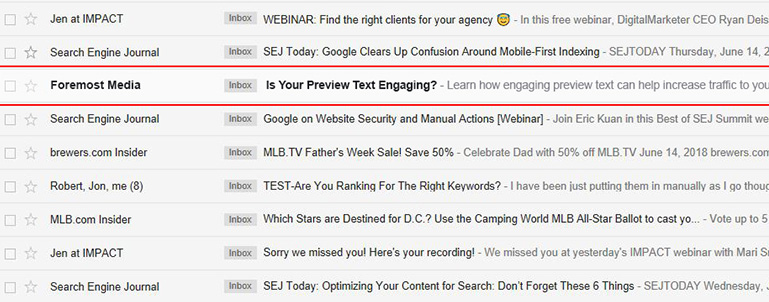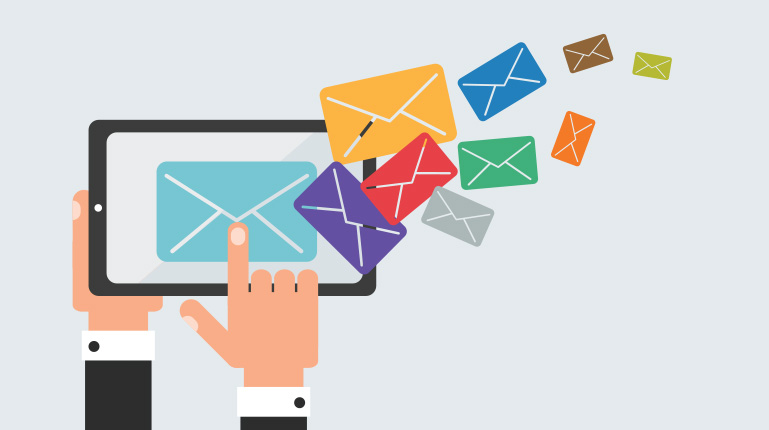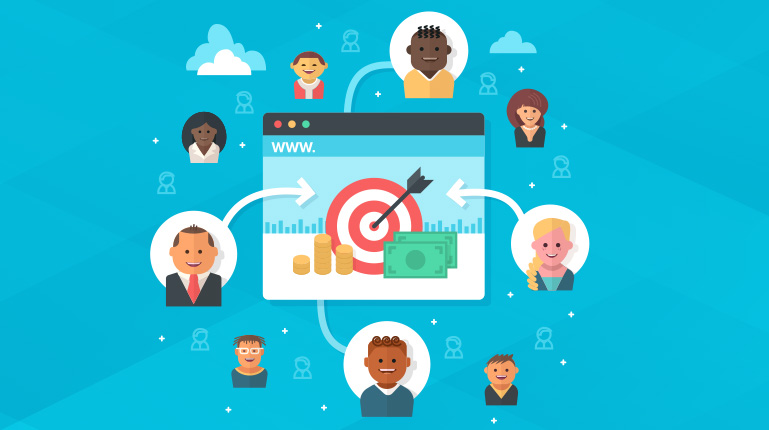Every day we are deluged by emails attempting to get our attention. Cutting through the clutter and getting to the heart of what your customers desire without alienating them in the process is as much art as it is science. Email personalization, robust list management, and a little common sense strategy can make the difference between killer open and click-through rates or ongoing frustration. After years of testing, here’s what we’ve learned:

1. Use a sender your target recognizes
If you want to grab attention, send emails from a name that the receiver recognizes. At Foremost Media, emails sent from key members of our leadership team get the best open rates, as almost all customers know the team and no one likes to risk ignoring a personal contact. No time for your CEO and top management to respond to emails? Using gender-neutral names like Pat or Sam in place of sales@ can help improve open rates. We've also have had some success with D-list celebrity names. This may sound crazy, but it’s absolutely true. Remember Office Space’s Michael Bolton? His name made him instantly recognizable and people paid attention. Turn your generic sales@ into michaelbolton@ and see what transpires. The open rates might surprise you!
No matter what name you ultimately choose, avoid using generic emails like sales@ or customercare@ like the plague. These overused generic terms trigger readers to immediately devalue and ignore.
2. Give your recipients a subject line that makes them want to open the email
Almost nothing is more important than your subject line. In traditional print media, they famously used to say, “if it bleeds, it leads.” Crass, but the psychology behind this truism holds today: people respond to things that are dramatic and peak their interest. It’s human nature. Be sure your subject line says something of serious interest to your audience. One caveat here: Don’t go too far or share all the details too quickly. We humans also respond to a little intrigue. For example, if your subject line says “40% off” your recipients already know the offer and if that isn’t enough, there’s no reason for them to open the email. Try something like “Hand-picked discount especially for you inside” or “Five free gifts with purchase, today only.” Tell half the story and use your email content to sell the rest.
3. Utilize preview text

4. Make the email all about your customer
We all love to hear our names. In fact, studies have shown we tend to like people who use our name frequently far more than we like those that don’t. So, make sure you use your recipient's name in the greeting and personalize as much as you can. If you work internationally or across domestic time zones, making the email all about your customers also means being sensitive to their location and optimal send times. No one likes to wake up to a 2 a.m. sales email. Be sure you are scheduling emails to arrive at just the right time for each prospect.
5. Send a targeted follow up
Now that you have someone’s interest, make sure you don’t lose them to the never-ending stream of their to-do lists. We all have a lot on our plate. Sometimes it takes but a small reminder to encourage action. Email systems have evolved. You can send emails with fresh subject lines to prospects that opened your offer but didn’t take action, as well as to those that didn’t open. Make the most of each campaign by giving your recipients a few opportunities to close the deal.

6. Leverage the power of automation
Today’s automated email systems give you the power to customize your campaigns in ways never before possible. You can schedule automated emails that are triggered by site visits, page visits, clicked links—the potential is endless. Take time to get to know how your customers seek you out and why. Then use this information to automatically reach out at the right time with the right information to help increase desired responses tremendously.
7. Consider dynamic content
Dynamic content simply refers to personalization within an email specific to the recipient. For example, national retail stores might display sales specific to a region or travel companies might showcase flights from a particular airport near the recipient. It may sound complex, but most email campaign products today include simple-to-use dynamic content options that allow you to send a campaign to your full list yet display content relevant to the individual recipient with just a few clicks. Not sure how? A good vendor can help you set up and manage this, too, no problem.
8. Be a master of your own list
Your campaigns are only as good as your list. Make sure your list is clean and maintained. Test and validate, cleaning up as you go. Allow your subscribers to help with the process by making the unsubscribe process as simple as possible. Some companies try to hold on to subscribers with a vengeance, but you truly don’t want someone who is not interested in what you offer being forced to receive emails. It doesn’t advance your goals or benefit anyone. Let go as gracefully as you welcome new subscribers and you are sure to avoid nasty spam complaints and build good will as as trusted source.

9. Link to personalized landing pages
It’s not easy getting someone’s attention, so once you have them, be sure you send them to the right place to make taking action easy. Never send an email prospect to your home page and make them hunt for what they want. Whatever you are promoting in the email, be sure your link is customized to reach just the right spot so completing the sales cycle is a no-brainer. Linking your email campaigns to personalized landing pages with content that is consistent with the email blast copy is a sure-fire way to boost conversion rates and avoid confusion and frustration.
10. Make sure the email is worth sending
I’m ending with this reminder in the hopes it will stick with you, though it could easily be #1 on this list. Many companies send out mass emails that say something generic like "Happy Holidays." Email overload and fatigue is real. Do you have a compelling reason for reaching out? Are you helping your customer? Do they want and need this? If your company has reduced holiday hours or an order cut-off time that customers need to know, by all means, let the right people know. Just make sure to target your message as you would any other. Be as respectful of your customers’ time and responsive to their needs as you would your own. The Golden Rule, the epitome of common sense courtesy, is always a good barometer.